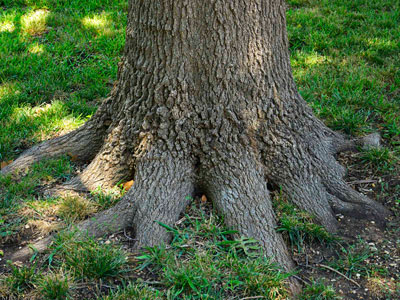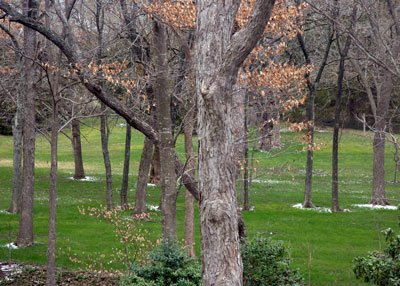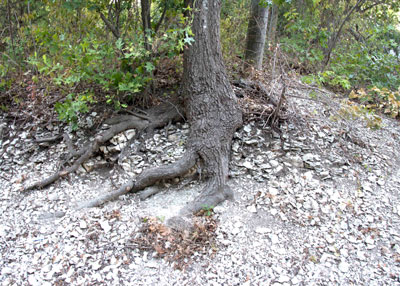Question of the Week: September 29, 2016
“Neil, my Shumard red oak has these huge roots on the surface of the soil. Has the soil eroded? What should I do?”
Roots like the ones in this photo alarm many gardeners. More than that, the people wonder how they should deal with them. Cover them? Cut them? Ignore them? Do read on, please!

Photo: Surface roots of Shumard red oaks, live oaks and many other trees can put people on edge.
Our photo is of a red oak, but I’m going to begin my answer by referring to pecans. People think of pecans as having deep taproots, and when surface roots begin to show, they figure they’ve done something wrong to cause it.
The fact is that 90 percent of any tree’s roots, even a pecan growing in soil along the Mississippi Delta, where rich soils go 100 feet deep – 90 percent of the roots will be in the top foot of soil. As the tree’s trunk and branches grow larger, so will its roots. If they began, say 2 inches beneath the soil’s surface when the tree germinated, by the time they are 6 inches in diameter, they will have grown/swollen a couple of inches up and out of the soil. It’s not erosion. It’s just the way roots operate.
Roots are near the soil’s surface for a reason. That’s where rainfall hits the ground. So while there are big taproots on those pecans, there also are tons of surface roots waiting to absorb rain that falls.
I had a good friend who called me to his house once. His red oak was doing just what the tree in the top photo shows. Except he had covered the roots. And then, as they grew larger still, he covered them again. And again. Until he had a mound of soil 8 inches high around his poor tree.

Photo: As snow melted across the creek from our house in February, 2015, I could see the natural root flares. This is what you want.
What you see in these photos is called “root flares,” and arborists want to see them somewhat exposed. If a tree’s trunk goes directly in the soil at right angles, without any of the flare showing, that’s bad for the tree. It’s planted too deeply, and it will probably never grow as well as it should. It might not even survive.

Photo: You can really see the importance of a tree’s shallow surface roots when you look at this red oak existing on little more than white rock.
So this is fairly normal behavior, and in many cases you should just ignore it. In absolutely no cases should you cover it with more soil. In some isolated cases, you might want to remove one or two roots if they appeared to be threatening your house’s foundation, a drive, patio or walk.
If you must cut a root…
The best time of year to remove one or two roots would be in October, since our high temperatures are gone, and since that would allow the tree six or seven months to produce new roots to compensate. Honestly, however, this is probably a job better left to a certified arborist.
